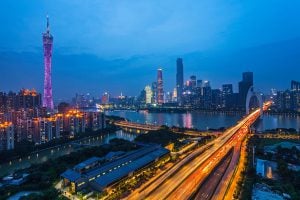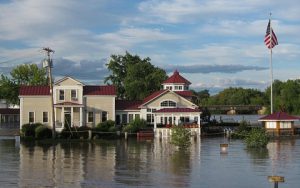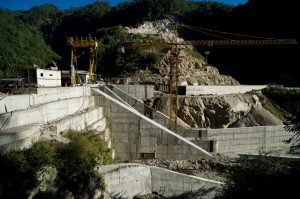Human communities have always thrived alongside water. Whether a river, a lake or a seafaring harbour; water is often the lifeblood of a city. But the global climate is shifting and this will wreak havoc on weather patterns, cause sea ice to melt and transform coastlines. As a consequence, the relationship between cities and water will change too.
Earlier this year scientists announced in the journal Nature that Antarctic ice sheets are melting more quickly than predicted and sea levels around the world could rise by 1.5 metres by the end of the century – doubling some previous estimates.
There’s enough water stored in ice, primarily in Antarctica and Greenland, to raise global sea levels by 70 metres, and it’s melting at unexpected rates. Earth's geologic history shows that such enormous fluctuations in sea levels have not been uncommon, with seas sometimes rising as quickly as 30 centimetres in just ten years.
In China, rising seas could result in the displacement of 45 million people from coastal cities in the coming decades and pose serious risks to buildings in cities like Shanghai, Hong Kong and Tianjin.
In the United States, huge swaths of New York are just two-metres or less above sea level, and New Orleans barely peaks above the sea. Greater Miami, in South Florida, is one of the world’s most economically important and climate vulnerable locations, with more than US$345 billion (2.3 trillion yuan) in assets, and the lives and livelihoods of more than 2.5 million people at risk from the rising seas.
A US real estate website recently analysed national property records based on the original Nature findings. It calculated the cost of the projected sea level rise to reach nearly $1 trillion (6.7 trillion yuan) in the US. In Florida alone, 13% of the housing stock is expected to be affected, at a cost of more than US$400 billion (2.7 trillion yuan).
Most of the world’s coastal cities will experience a significant impact to their low-lying areas even if the most conservative sea level projections prove correct.
Unpredictable weather, unpredictable water
In the coming decade, two-thirds of the world’s population can expect to experience water shortages. Climate change is exacerbating drought and reducing supply in many places.
And when the rains do come, warmer seas will mean an increasing number of powerful storms and weather patterns that “stall” in place, leading to dramatic floods.
This summer, China experienced torrential rain leading to floods and landslides that killed hundreds of people. According to the World Resources Institute, more than 20 million people worldwide already suffer the impacts of river flooding – if current climate trends continue, that figure could more than double to 54 million in the next 15 years.
Too often, the neighbourhoods that face the highest risk of river and coastal flooding are lower-income communities where the residents cannot afford flood insurance or invest in wholesale property renovation.
Nature can protect our cities
When I visited China earlier this year to learn more about The Nature Conservancy's conservation efforts there, I was excited to hear of the new Sponge Cities initiative, a governmental effort to use natural areas, from parks to green roofs, to address water shortages and flooding.
In Miami, The Nature Conservancy is working alongside city leaders and an engineering firm to develop new strategies for employing nature to help protect people from rising seas. They combine traditional “grey infrastructure” with “green infrastructure” – natural systems that can absorb rainwater, mitigate coastal flooding, and reduce the impact of storms by providing a wave barrier.
Mangrove forests, coral reefs, seagrass beds, salt marshes, oysters – all of these are natural systems that belong in our coastal communities, and all can help reduce the effects of rising seas and storm surges on coastal communities. We hope to replicate the Miami model in cities around the world.
Inland, undeveloped floodplains along rivers, urban forests, and even well-designed parks can absorb and filter floodwaters, making cities safer and protecting water quality.
For instance, a healthy coral reef can reduce a wave’s energy by 97% before it hits the shore, and just 100 metres of mangrove trees can reduce wave height by 66%. These measures also offer co-benefits to communities that traditional “grey infrastructure” solutions cannot. These include improved water quality, fish production and eco-tourism opportunities.
Together, we can answer the challenge of rising waters by building sustainable neighbourhoods from Miami to Shanghai – communities that not only integrate nature to mitigate flooding but also provide natural areas for people.







